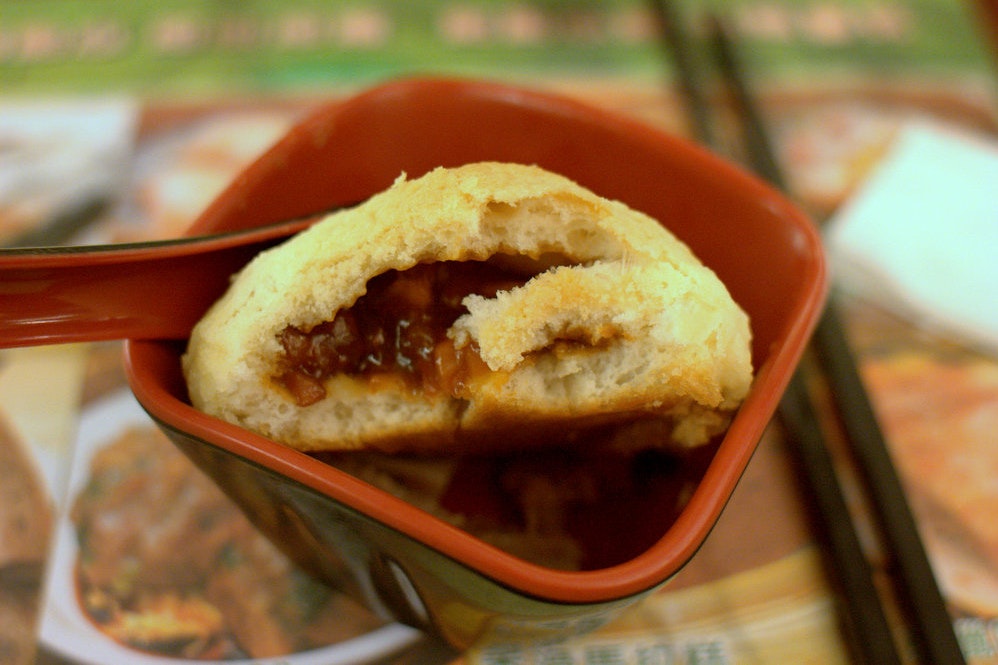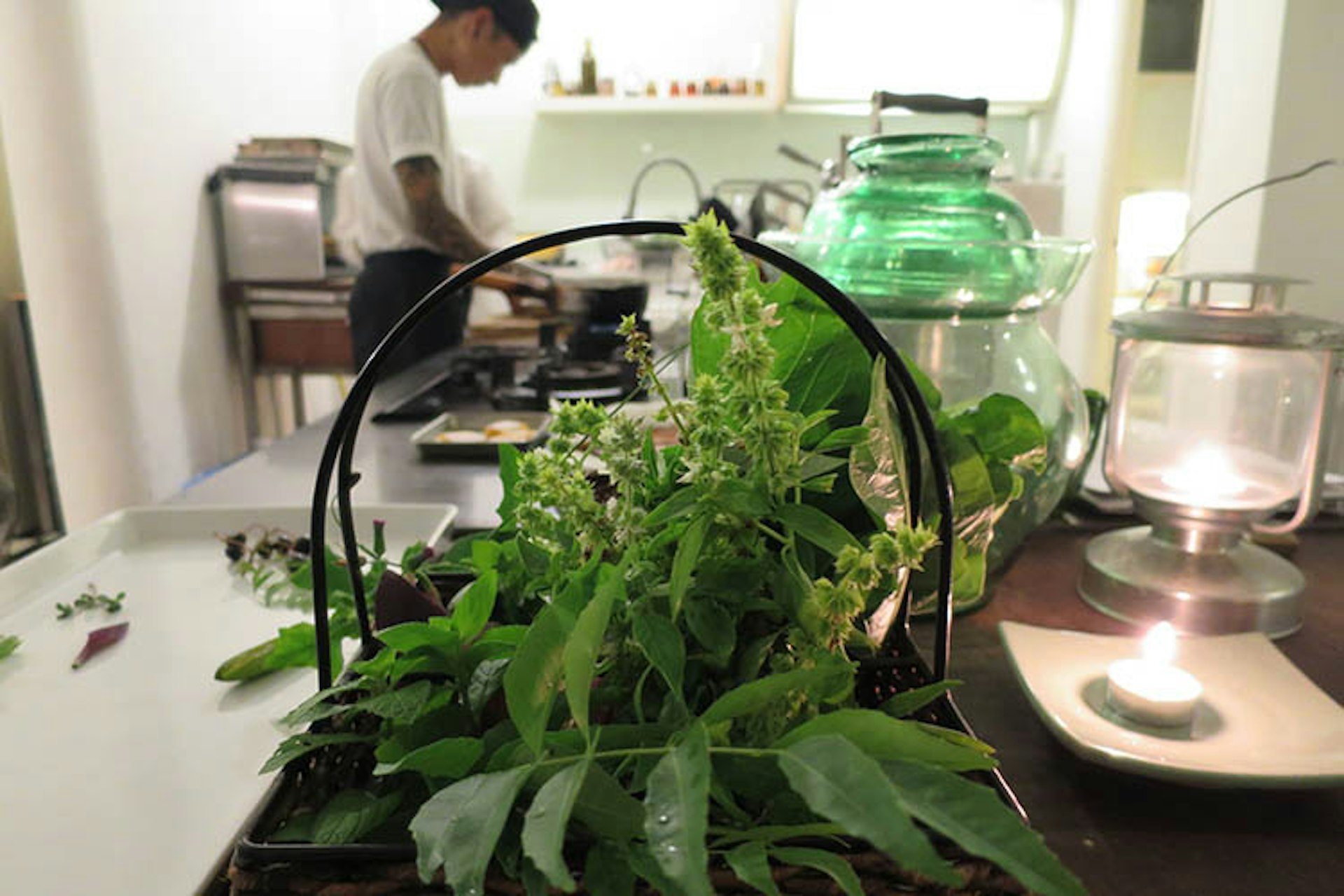Hong Kong chefs are a versatile bunch who can move effortlessly between different culinary traditions, bringing together not only old and new, Chinese and Western, but haute and humble, coffee and tea.
Their skills and creativity and love for the city’s food have led to many unique dining experiences.

From exquisite Hong Kong cuisine to Michelin-recommended delights, here are our favorite unique Hong Kong dining experiences.
Gluttony hawker
Hong Kongers will eat absolutely anything as long as it justifies its place at a table, any table. So to avoid paying exorbitant rent and focus on the food, savvy restaurateurs are setting up their dishes in government-run food courts, offering fine dining at unfashionably low prices. Among these gourmet hawkers, ABC Kitchen (Queen St. Cooked Food Market, 38 Des Voix Rd.) stands out for its authentic Western menu. Inside the frenetic, fluorescent-lit spread that the eatery shares with other operators, ABC regulars slurp up bouillabaisse made with fresh local seafood, the wolf at its crispiest. Roast pork (roast suckling pig), and inhale fluffy soufflé, all for the price of admission served under a crystal chandelier.
Cheapest starred eatery

Likewise, at Tim Ho Wan, the world’s cheapest Michelin-starred restaurant, commoners get to sample food fit for emperors. Owner Mr Mack was a diminutive chef at the three-star Lung King Hen of the Four Seasons before going solo. Now, inside his glorious hole, in an unassuming part of town, he’s recreated his magic – the famous barbecued pork buns (char siu baau), of which more than 750 are sold in one day. Beefballs topped with dried mandarin peel and aromatic osmanthus flower jelly are a treat for anyone who can afford US$1.50-$3 for a basket of dim sum and, importantly, wait as many hours. will Tim Ho Wan’s lines are heart-stopping. When you arrive, a smiling Mrs. Mac will give you a number. Then fly a kite, learn Cantonese opera, or plant some roses, and check back in 90 minutes.
Chinese Molecular Gastronomy
Foam and powder may not be comfort food for everyone, but molecular gastronomy enjoys a following in Hong Kong. Bow Innovationwhich deconstructs classic Chinese dishes and recombines them in visually and gastronomically surprising ways, is among the few that inspire. Xiao Longbao (pork fritters), for example, are blobs of ginger-infused pork soup encased in a transparent wrapper that, when eaten, explode into the juiciest pork fritters.
Imaginary food

A new trend in Hong Kong includes bespoke menus, seasonal food grown within meters of your table and lots of love. Ying Yang Coastal is the brainchild of Chef Margaret Sue, a self-taught cook who loves food and loves ingredients. Much of the food she cooks she grows or uses herself, whether it’s the fresh herbs that green her patio or the fish she caught early in the morning. The idea here is simple: a custom meal at a private table. Recipes are often the chef’s take on old Hong Kong cuisine or unique to the fishing village near the kitchen. You book in advance and spend the evening with Margaret. You take a taxi to his kitchen-stroke-dining room, located on a very secluded beach, some distance from the hustle and bustle of Hong Kong Island. Candles are lit, doors are thrown open to let in fresh harbor breezes and chatter while Margaret and her sous-chef chop, boil and fry. You watch, even participate in the creation of the food and each course is more enjoyable because it is inspired by the chef’s love and laughter. You come away from friends with Margaret and have one of the most memorable meals of your life.
Western soy sauce
‘Soy Sauce Western’ (si-yau sai-chan) is a favorite name given by locals to a style of cooking that serves Western dishes prepared with Chinese wisdom. It is believed to have been invented by a sous chef of a foreign trading company during the Qing dynasty, and was inspired by Russians’ shashlik, zakuska and borscht, who fled to Shanghai and opened cafes. Western recipes are freely adapted, such as replacing dairy ingredients with soy and Worcestershire sauce (many Chinese were lacto-intolerant). Or Ping Con Known for its smoked pomfret, roast pigeon and turkey-sized souffle. On Queen’s Cafeborscht and roast pork over rice are perennial favorites.
Tea Cafe

Tea Cafe (Cha Chan Teng) emerged in the 1940s as cheap and cheerful joints serving Western-style snacks and drinks to locals who couldn’t afford scones and Earl Grey. Since then, their menu has evolved to include quick and easy choices, Chinese and pseudo-Western. But they are best known for their ‘pantyhose’ milk tea – a strong and silky concoction made from black tea and crushed eggshells. It is filtered through a bag that is hung like a stocking (hence the name) and consumed with evaporated milk. It is sometimes mixed with three-part coffee to make a popular drink. Yin Yong, Or tea and coffee? Pak King Cafe and Mido Cafe serve an average cup. Yin Yong Amidst mid-century nostalgia.
This article was originally written by Piera Chen and published in December 2010. It was updated by Megan Eaves in August 2015.
